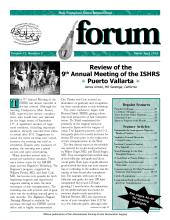The author has no financial interest in any of the products mentioned.
Hair almost always exits the skin obliquely in a uniform fashion. To obtain the most natural appearance and the best blending for grafted residual hair, the angle and directions of grafted hair should match the residual hair as closely as possible. Coronal slits give very precise and consistent control of hair angle and direction, much superior to sagital slits.
With sagittal slits, the skin incisions lie parallel to the direction of hair flow. To change from sagittal to coronal slits simply rotate the blade 90° and angle the blade to match the existing hair angle. Although it is labeled coronal incisions, it is actually the direction of hair flow that determines the incisional plane. Because the incisional plane is always 90° to the directional of hair flow, perpendicular incisions may be a more accurate description (see Figure 1).
Advantages of Perpendicular Slits
Because it is the thin edge of the slit that is aligned with the residual hair, the slit actually sandwiches the grafts keeping the hair shaft in a consistent and exact angel.
With sagittal slits, acute angulation is difficult with small blades (1.2mm and smaller) and extremely difficult with larger blades (1.7–2.0mm). Whereas acute angulations (temporal hairline) are easy with perpendicular slits (see Photos A1 and A2).
In its natural state, hair in larger follicular units tends to grow side by side perpendicular to direction of hair flow. Grafted hair planted in perpendicular slits grows in a similar manner; this will give the grafted hair a fuller look when viewed from the front.
Gives excellent directional and angle control in scar tissue.


A2. Non-grafted side for comparison

A2. Grafted hair very acutely angles in temporal hairline

(A2 magnified)

B. Donor area showing follicular units growing side by side perpendicular to the direction of hair flow

C. Grafted hair (larger FUs) lined up side by side perpendicular to the direction of hair flow

D. Grafted hair lined up side by side perpendicular to flow direction
Are Perpendicular Slits Safe?
Perpendicular slits are safe but care and attention need to be paid to the small details. After nine years of using this technique, I have found the following works best:
➤ Use square chisel blades held in handles with adjustable depth—this creates ideal recipient sites.
➤ A blade cutter from www.cuttingedge_surgical.ca. This machine allows you to cut thousands of square chisel blades from Persona surgical prep blades and allows you to have an unlimited source of custom size blades.
➤ For single hair FUs, use 0.09mm to 1.1m blades (#19G needle = 1.2mm, #18G needle = 1.32mm).
➤ For two and three hair FUs, use 1.2mm to 1.4mm blades.
➤ For larger FUs use, 1.5mm to 1.7mm.
➤ Any blade larger than 1.8mm must be used with caution and is not recommended.
➤ Ellis has a mini blade handle that works well.
➤ Tumesce the recipient site before making the incision.
➤ Always adjust the blade depth to fit the height of the grafts. Too deep you will damage the underlying vessels, too shallow and popping will occur.
➤ The blades are very sharp so only a light touch is required.
This technique is more challenging and requires more concentration in that we must always be paying close attention to hair direction angles as we make our slits. The end result is an almost perfect blending of grafted to existing hair.
- Copyright © 2002 by The International Society of Hair Restoration Surgery






